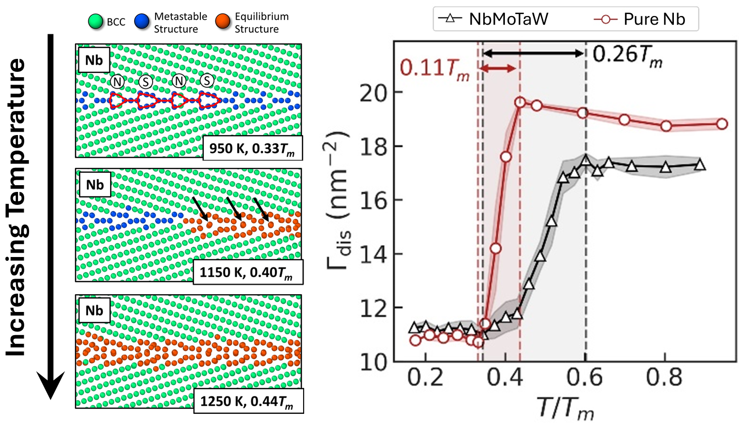2024 IRG-1: Chemical complexity frustrates grain boundary transitions
Grain boundaries often transition between different states, which has important implications for material stability as well as key properties such as strength and fracture resistance.
In this study, atomistic computer models were used to study grain boundary transitions in NbMoTaW, a complex concentrated alloy and a promising material for high temperature applications. A compact equilibrium grain boundary structure was found after relaxation at elevated temperatures, with the transition to this state being much more difficult in the alloy than in the reference pure metal. The chemical complexity of the NbMoTaW alloy is found to be a key feature behind this behavior, opening future pathways for the design of novel high-performance materials.
Geiger I, Apelian D, Pan X, Cao P, Luo J, Rupert TJ. “Frustrated metastable-to-equilibrium grain boundary structural transition in NbMoTaW due to segregation and chemical complexity,” Acta Materialia(revised manuscript under review). https://arxiv.org/abs/2312.14344

(left side) Grain boundary structure can transition from a metastable to an equilibrium state. (right panel) This transition is frustrated significantly in NbMoTaW, as compared to pure Nb, as shown by the much wider temperature range for the transformation on a plot of excess disorder.
I. Geiger, D. Apelian, X. Pan, P. Cao, T.J. Rupert (University of California Irvine)
J. Luo (University of California San Diego)